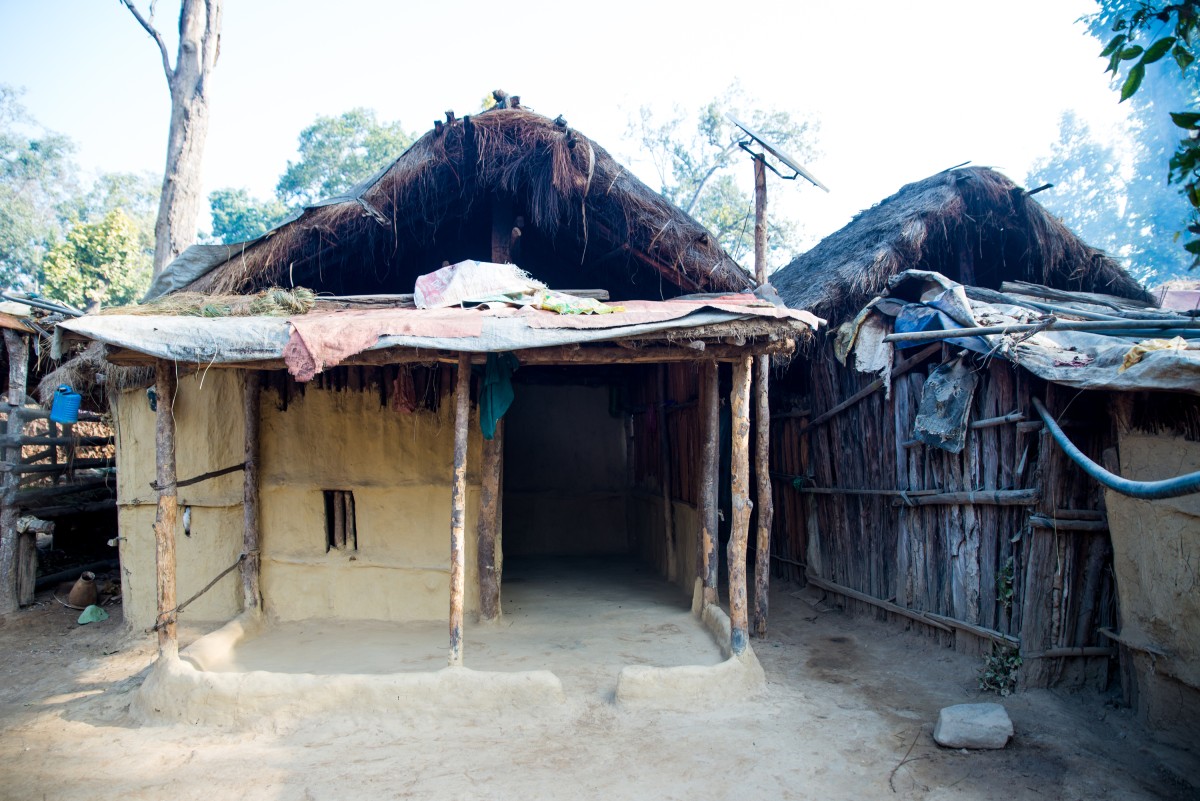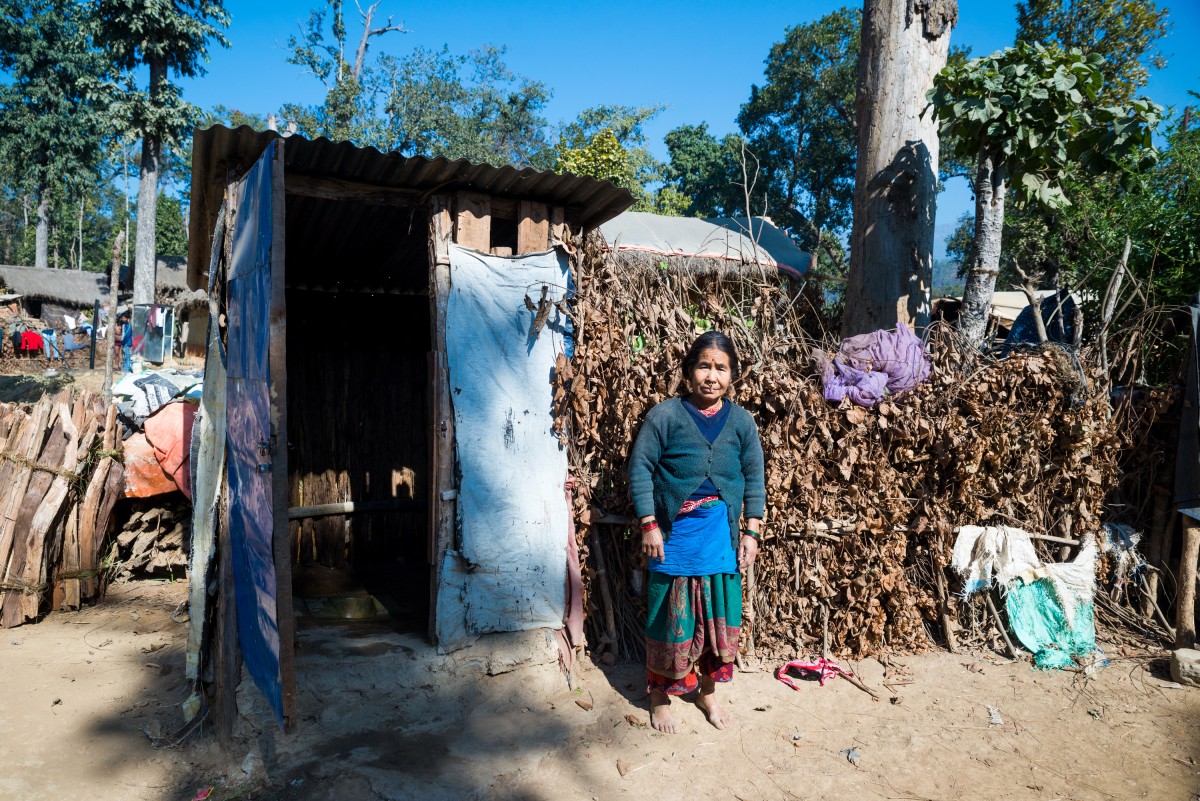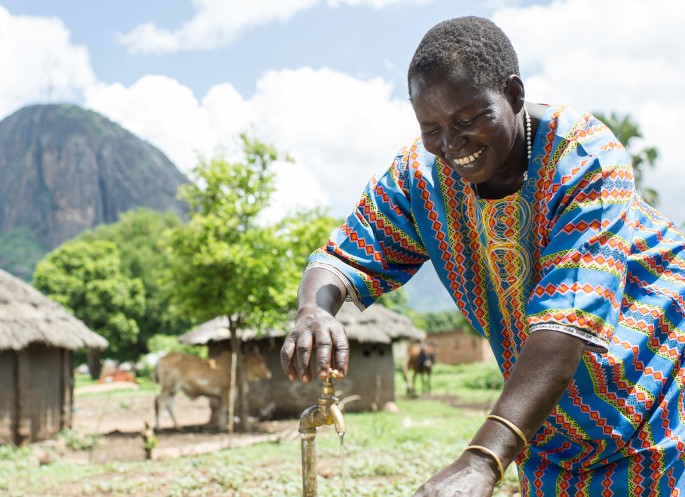In this Nepali community, climate change is mostly felt through water
The effects of climate change are abundantly clear to be observed in water: 90% of climate risks are water-related. Financing adaptation is more crucial than ever.
Written bij Pragati Bajracharya (Simavi) and Anil Maharjan (ENPHO)
Girighat is a small rural settlement in western Nepal, where more than 100 displaced households have been camping since 2014. They were displaced from their community when floods aggravated by the effects of climate change washed away their houses, along with their belongings.
In the past decade, climate change has increased the frequency and intensity of floods in this area. The combination of erratic and increasingly intense rainfall, with settlements in flood plain areas has made these communities particularly vulnerable to flooding. Now, 8 years later, what was meant to be a temporary relocation has turned into a semi-permanent settlement. This was not by choice but out of necessity.
The aftermath
Despite having their whole life turned upside down, the communities had no choice but to settle near the same river again. This time though, they moved more upstream and on a much-elevated location hoping to stay safe from flooding. The river is not only their primary source of water for drinking, cooking, and washing, it is also a source of income. A group of women from the settlement break rocks every day on the dry bed of the river to sell them to construction companies to earn a living.
Jeopardising the well-being of the entire community
While floods are a common occurrence in Nepal, the intensity and impact of unseasonal heavy rains on the human settlement have lately been on the rise due to climate change. Floods not only damage households but also destroy schools and health care centres, affecting the future of young children and jeopardizing the health and well-being of the entire community . Limited access to safe water and sanitation facilities increases the risk of waterborne diseases too.

Not enough toilets
With the little relief money provided by the government, the community built makeshift huts and two communal toilets from locally available resources. But these toilets were not enough for the entire community and lacked basic facilities like water, soap and light. This lack of access to their basic needs (water and sanitation) compounded by the impact of flooding led to the contamination of water sources, resulting in diseases such as diarrhea, typhoid, cholera, etc. Poor hygiene and sanitation conditions, and poverty also limited their ability to strengthen their resilience against future climate risks.
Strengthening resilience
Through the WASH SDG sub- programme in Nepal, we supported the community to build four additional latrines with a safe sanitation containment structure. While the technical design and financial support to purchase building materials were provided through the programme, the community themselves were engaged in its construction. The newly built double pit latrine serves as a long-term sanitation option against climate risks in high water table areas. The pits are also constructed higher than the normal ground level so that rainwater does not enter the pit in case of flooding.
Additionally, as there are two pits, they do not need to be emptied immediately. While the excreta in one pit is filled and decomposing into reusable soil, the second pit can be in use. These structures are also durable as they are made of aluminium instead of bamboo or wood. We have also been working closely with the local government to ensure these vulnerable communities are kept as a priority for any additional support. Following our lead in building safe latrines for the community of Girighat, the local government supported the construction of water pipelines, ensuring communities have direct access to water.

“Previously, the condition of the toilets compelled us to go to the forest. It was especially difficult at night as there is no electricity, and the toilets are far away. But now, after the construction of these toilets, it has been very easy for us. We are happy that our struggles were recognized and addressed”.
Choche Damai, a resident of Girighat
The effects of climate change are felt mostly through water as 90% of the environmental disasters are water related. Unfortunately, communities who have least contributed to this climate crisis bear the brunt of the impact. They are also in the worst position to invest in climate adaptation and resilience. It is critical now more than ever t hat we act on the global commitments and promises towards financing climate adaptation in the global south.


